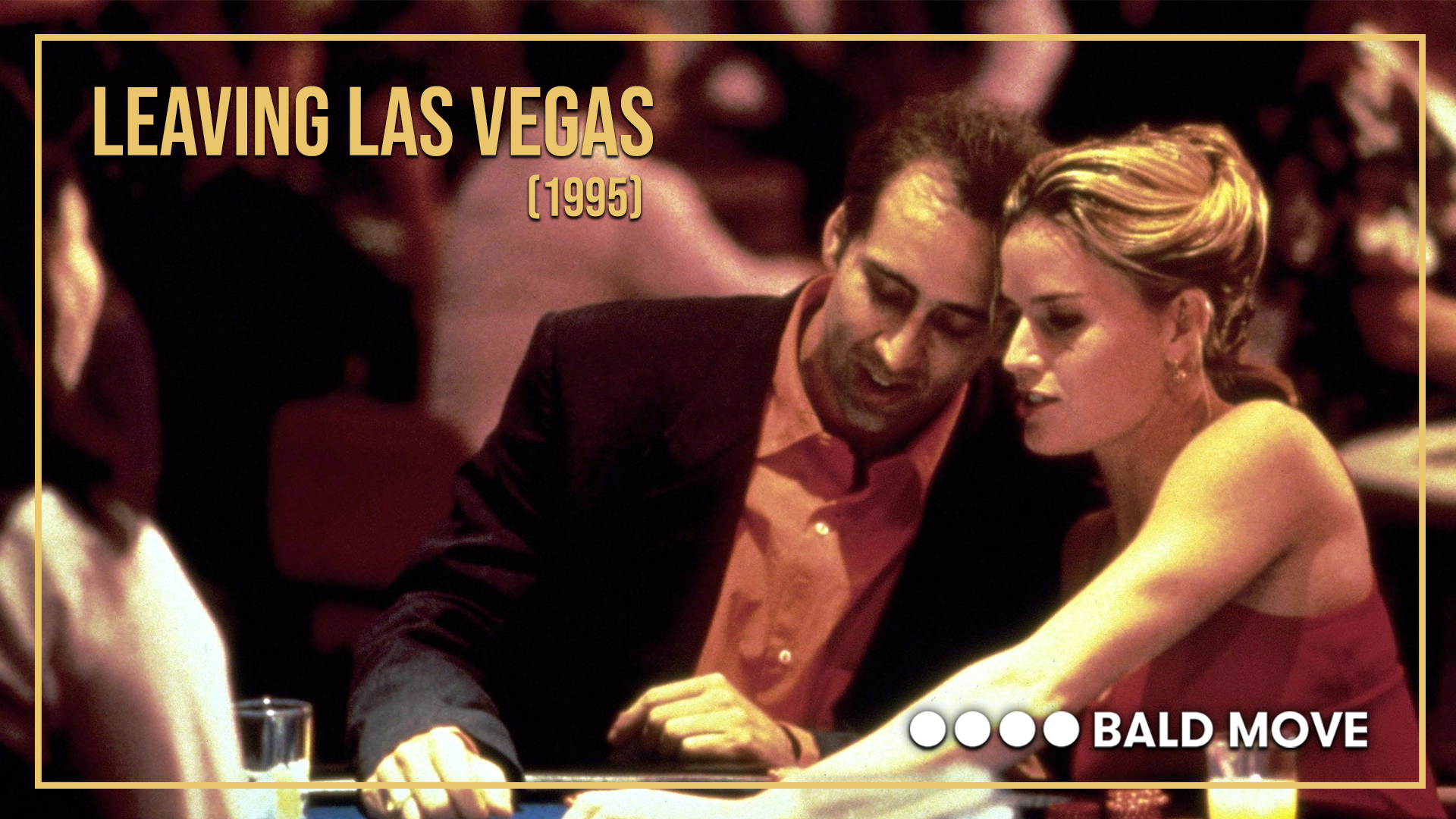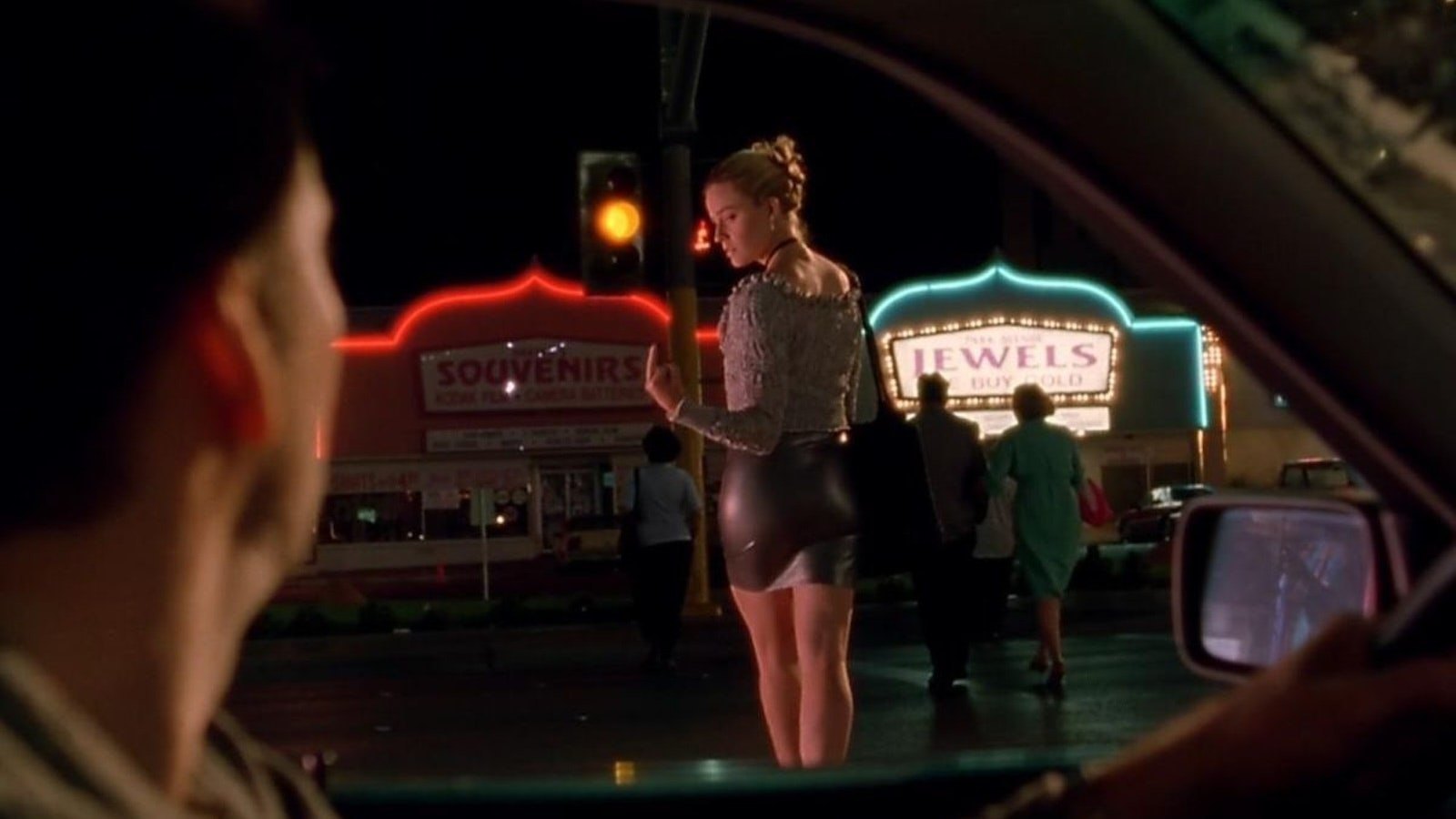Leaving Las Vegas (1995)

Leaving Las Vegas (1995) is a deeply emotional and poignant drama film directed and written by Mike Figgis, based on the semi-autobiographical novel Leaving Las Vegas by John O’Brien. The film stars Nicolas Cage and Elisabeth Shue in unforgettable performances that explore themes of addiction, loneliness, and the human desire for connection. It tells the story of a man, Ben Sanderson, who moves to Las Vegas with the intent of drinking himself to death, and his relationship with a troubled prostitute named Sera.
The film follows Ben Sanderson, played by Nicolas Cage, a screenwriter who has hit rock bottom due to his alcoholism. After losing his job and family, Ben heads to Las Vegas with the intention of drinking himself to death. There, he meets Sera (Elisabeth Shue), a prostitute who has her own set of personal struggles. Despite their dark paths, the two form a fragile bond, as they provide each other with comfort and understanding in their shared loneliness and despair. The film chronicles their relationship, which is as much about escape as it is about fleeting moments of connection.
At the heart of Leaving Las Vegas is the exploration of addiction and its destructive impact on individuals and their relationships. Ben’s decision to drink himself to death reflects his profound despair and self-destruction, while Sera’s involvement in prostitution speaks to her own internal struggles and need for emotional survival. The film paints a raw, unflinching portrait of the downward spiral of addiction, showing how it consumes every aspect of one’s life, from relationships to self-worth. It also portrays the difficulty of escaping these cycles, as both Ben and Sera find solace in each other, even if briefly, amidst their emotional turmoil.

The performances in Leaving Las Vegas are remarkable, with Nicolas Cage and Elisabeth Shue delivering some of their most powerful work. Cage’s portrayal of Ben Sanderson earned him an Academy Award for Best Actor, as he captures the tragic yet sympathetic nature of the character. His raw emotional depth brings complexity to a man who is both self-destructive and vulnerable. Elisabeth Shue, in a more understated yet equally moving role, portrays Sera as a woman who is desperate for affection and understanding but also bound by her own sense of guilt and shame. The chemistry between the two leads is central to the emotional weight of the film, as their relationship becomes a brief but meaningful escape from their respective realities.

Mike Figgis’ direction, coupled with the film’s cinematography, enhances the somber and intimate tone of the story. The use of lighting and color is stark, with Las Vegas itself acting as a symbol of both excess and isolation. The film often juxtaposes bright, flashy casino lights with the dark corners of the characters’ personal lives, highlighting the contrast between outward glamour and inner turmoil. This visual style reinforces the sense of hopelessness and emotional desolation that permeates the film, while also emphasizing the fleeting nature of the moments of intimacy between Ben and Sera.

In conclusion, Leaving Las Vegas is a powerful and heartbreaking film that delves into the human experience of addiction, love, and despair. It provides a raw and honest portrayal of the consequences of self-destructive behavior, as well as the deep need for human connection even in the darkest of times. With standout performances from Nicolas Cage and Elisabeth Shue, the film is a haunting exploration of the fragility of life and the fleeting nature of redemption. Leaving Las Vegas is not just a story of tragedy, but also a meditation on the brief, bittersweet moments of love and understanding that can offer solace, even in the most dire circumstances.











